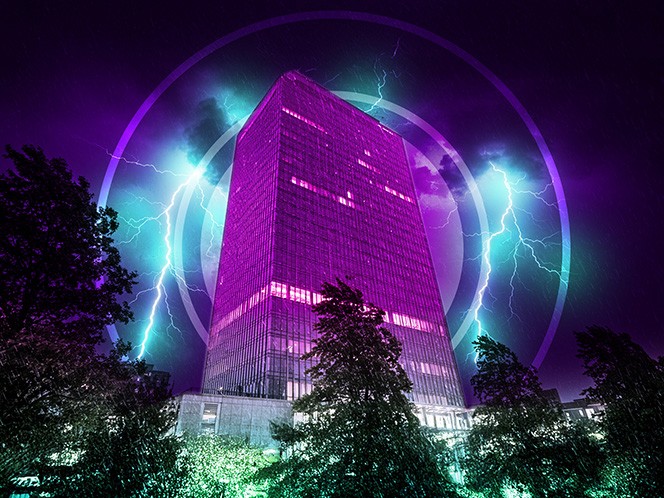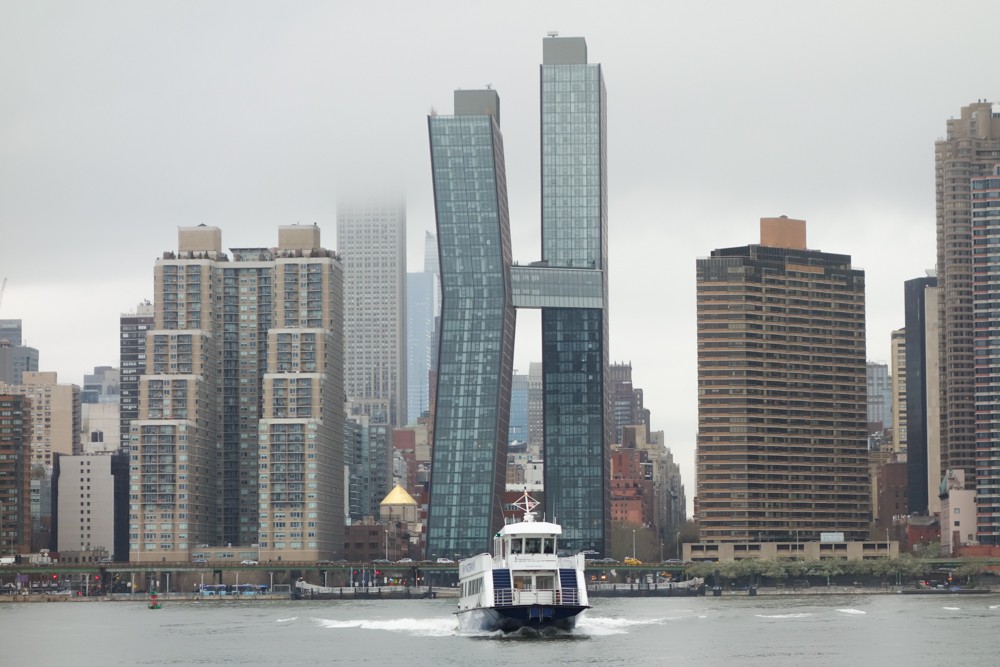Weather-proofing skyscrapers in the age of climate change
Posted: June 30, 2025

In the summer of 2024, fast-moving thunderstorms swept through Houston, Texas, flooding streets and toppling trees and power lines across the city. One particular storm in mid-May shattered windows and tore facade panels straight off many of the city’s skyscrapers.
The extent of the damage to high-rise buildings was notable. They had been designed to withstand category 4 hurricane-force winds of up to 156 miles per hour—much stronger than the 90 mph winds that buffeted the buildings during this latest storm.
Intrigued by the discrepancy, a group of researchers from Florida International University eventually identified a culprit in the specific aerodynamics of the derecho, a type of rainstorm characterized by straight-line gusts.
The problem, it turned out, were the strong downbursts it created: as the wind bounced off buildings, erratic drafts flowed up and down their facades, while explosive bursts fanned out in all directions near ground level. In other words, the issue was not wind speed alone but also how the air was dispersed.[1]
“When strong winds move through a city, they can bounce due to interference between tall buildings. This increases pressure on walls and windows, making damage more severe than if the buildings were isolated,” Omar Metwally, an FIU doctoral student and one of the report’s authors, explained.
“On top of this, downbursts create intense, localized forces which can exceed typical design values for hurricanes, especially on the lower floors of tall buildings.”
Our Industrial Life
Get your bi-weekly newsletter sharing fresh perspectives on complicated issues, new technology, and open questions shaping our industrial world.
Managing building threats from flooding to wildfires
Extreme weather brings a long list of threats that building designers have to consider, especially when going tall.
Wind generally increases in speed the higher you get and, on top of structural and facade-level considerations, also impacts everything from piping and elevators to the wellbeing of a building’s inhabitants.
Flooding is a threat for any building, of course. At the other end of the spectrum, prolonged drought can also shift the soil—with obvious impact on foundations.
But addressing extreme weather-related threats can also lead into a feedback loop of simply adding to your building’s carbon footprint, says Chris Edgington, an associate director at engineering consultancy Arup. You can always use more material, for example to enforce against high winds, or run the air conditioning harder to cool down during heatwaves.
Another, less obvious example: in an area prone to wildfires, you may add a filter to the air system “to keep the nasties out,” Edgington says. “It's really important in those kind of conditions. But what that does is it increases the amount of pressure in the system, so the fans are having to work harder in order to deliver air to people.”
That will use more energy, too—becoming “another tiny little driver” of the problem you’re addressing in the first place: climate change.
Global warming is already increasing the frequency and intensity of almost all extreme weather events. Scientists are now even able to pinpoint how much worse an individual catastrophe was made by climate change, from wildfires to typhoons.
In the meantime, more tall buildings are going up: the number of structures rising above 200 meters has doubled since 2017 and close to 500 more projects are currently under construction around the world.[2]
To make sure those skyscrapers can weather worsening extremes, architects and engineers are constantly adapting their approach. After Superstorm Sandy hit New York City in 2012, JDS Development Group, a construction firm, started work on a waterfront apartment complex next to the East River in Manhattan.
 The Copper residential complex, in Manhattan. Built by JDS Development, it has been designed to withstand major weather events. In 2021, it was sold for around $850 million. Source: Wikimedia Commons.
The Copper residential complex, in Manhattan. Built by JDS Development, it has been designed to withstand major weather events. In 2021, it was sold for around $850 million. Source: Wikimedia Commons.
To hurricane-proof the building, the company decided to build a flood-resilient basement and a lobby lined with stone instead of wood (which would weaken from moisture). Mechanical equipment typically relegated to the basement, including generators, switchgear and pumps, was instead moved above the flood line to the second floor.
The company also installed an emergency power system, run on natural gas, that could provide electricity to pumps, elevators and apartment fixtures during an outage. Finally, a park on the property was designed to protect the building from floodwaters as much as possible with bioswales—depressions that capture and channel stormwater.
How building standards are catching up to climate change
Of course, architects and building engineers have always planned for extreme weather. Companies are now used to incorporating climate models in their forecasting and, for example, employ computational fluid dynamics to test how building designs would respond to wind conditions in their specific locale.
But the simulations can get you only so far if conditions change in real time—as amply illustrated by Houston’s derecho. Part of the problem, according to Arup’s Edgington, is that much of this planning now increasingly relies on an outdated reality.
“The codes and standards that we’ve used, historically, have been designed based on things like what we call a 1-in-100-year storm or a 50-year return period. They look at, what’s the worst environmental event on record, and design for that,” he says.
“But at that point, effectively, we’re just looking in the rearview mirror. We need to be thinking about what could happen in the future, rather than what happened in the past.”
Regulation and standards are now evolving. Edgington cites work by the American Society of Civil Engineers, which is reviewing its guidance around design loads (the forces a structure is meant to withstand) to better reflect extreme weather conditions. And the UK Green Building Council is working on a resilience roadmap, looking at the effects of climate change on the built environment as a whole.
But at some point, as weather extremes increase, Edgington suggests it may simply no longer be feasible to eliminate every risk, or at least cater to every human comfort—especially when keeping in mind the carbon feedback loop.
“Is it reasonable that the inside of a building should still be as wonderfully comfortable at 19° or 20° inside, on a day when it is 38° outside?” he says. “Maybe you could allow that to flex a little bit and save a great deal of embodied carbon.”